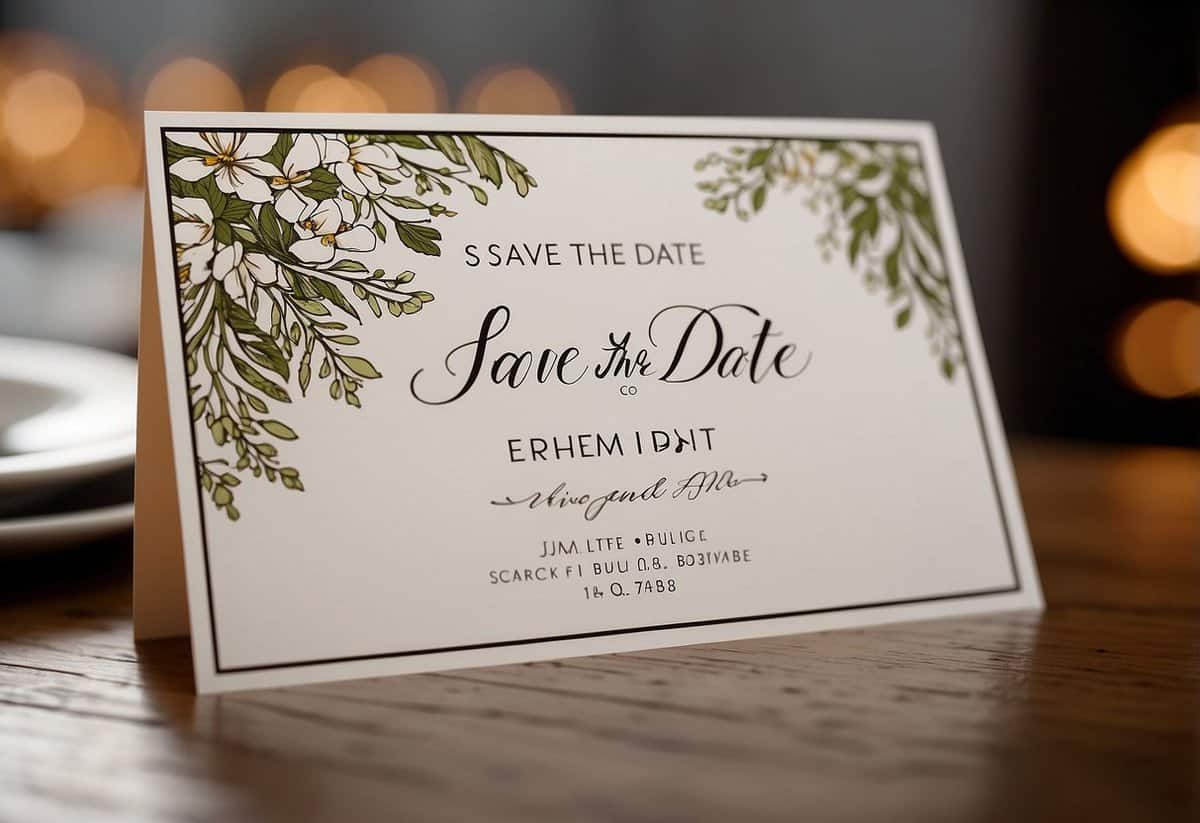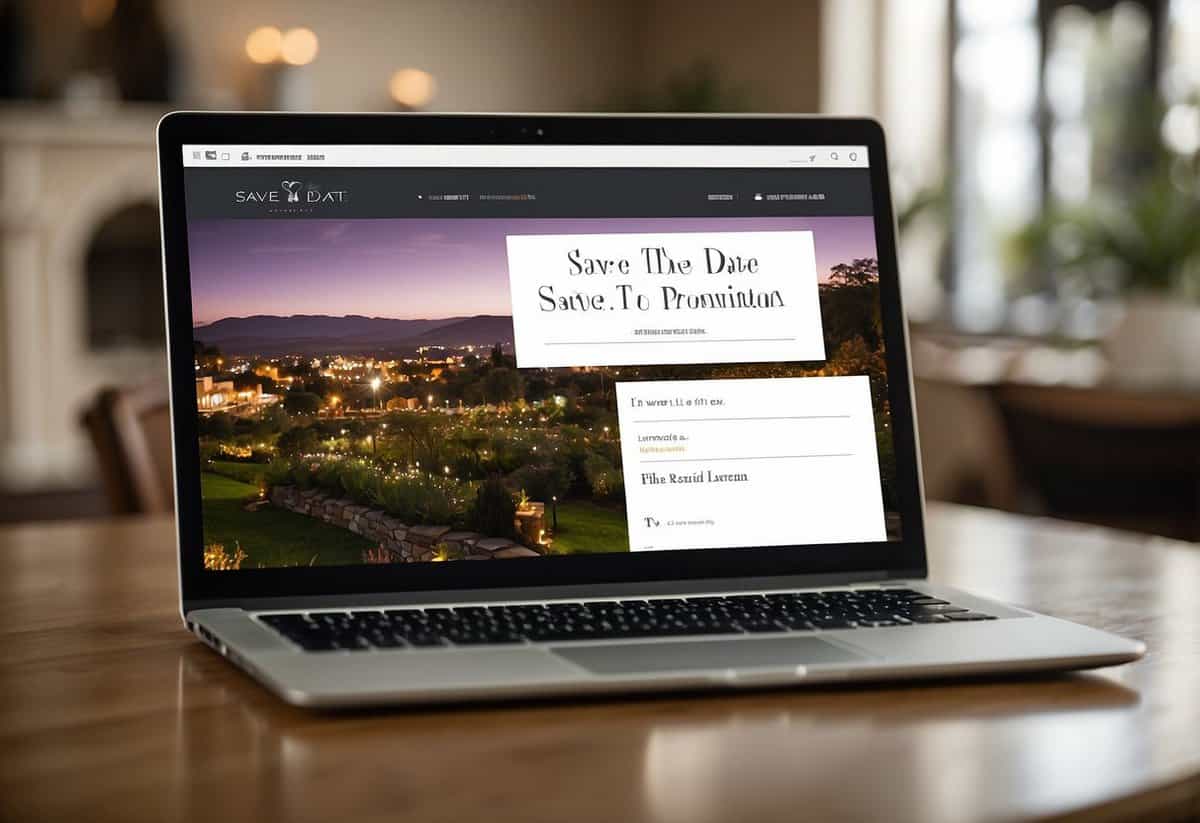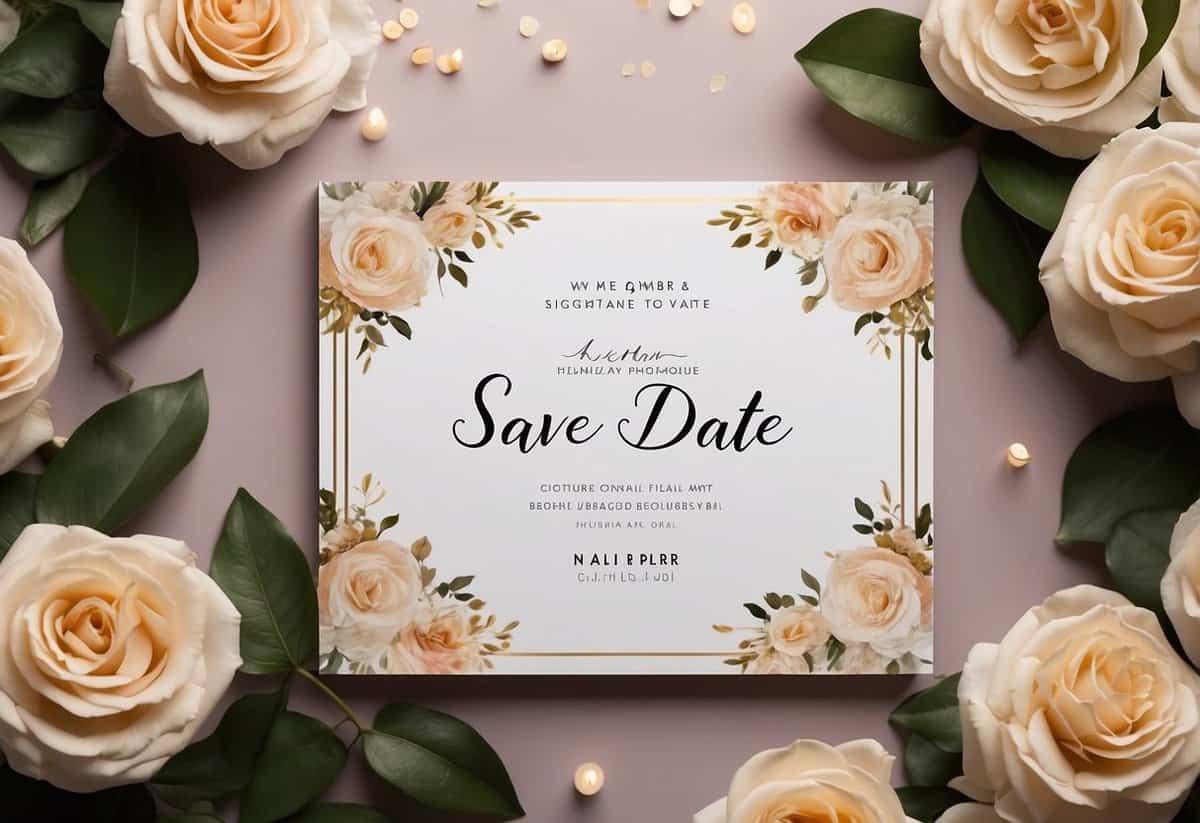Are You Supposed to Put Your Wedding Website on Your Save the Date? Here’s the Scoop!
Planning a wedding can feel overwhelming, but getting your save-the-dates just right can set a positive tone for the rest of your preparations. Yes, you should include your wedding website on your save-the-dates. This small detail can make a big difference and save you from a lot of questions from your guests later on.

Your save-the-date is the first glimpse your guests will have into your big day. Including the wedding website not only helps build excitement but also provides a convenient place for guests to find detailed information. They’ll be able to see everything from the dress code to registry info, making the whole planning process smoother for everyone involved.
Sending out save-the-dates with your wedding website link also aligns with modern wedding etiquette. It offers a central hub for your friends and family to stay updated. This way, you won’t need to field as many individual questions, and everyone will have the essential details they need well in advance.
Wedding Save-the-Date Breakdown

Understanding what save-the-dates are and their key purposes can help you make informed decisions about your wedding planning. This section explains what save-the-dates are and why they are important.
Defining Save-the-Dates
Save-the-dates are advance notices sent to your wedding guests. They share the wedding date and location well ahead of the formal invitation. These cards are usually simple and to the point. They ensure that your guests block off your special day on their calendars.
You typically send them out 6-12 months before your wedding, especially for destination weddings or holidays. Using elegant designs or creative formats can set the tone for your wedding. Adding your wedding website can provide guests with additional details.
Key Purposes of Save-the-Dates
The main goal of save-the-dates is to inform guests about your wedding date and location early. This helps them make travel arrangements and adjust their schedules in advance. Save-the-date etiquette suggests including the basic details and an RSVP indication.
Additionally, you might consider including your wedding website to offer more information. This can include your engagement story, accommodation options, and a link to your gift registry. By doing this, you increase the likelihood that guests will attend your celebration.
Digital Savvy: The Role of Your Wedding Website

Your wedding website serves as the digital hub for your big day, providing convenience, integration options, and privacy features. It helps keep your guests informed and engaged from start to finish.
Digital Convenience and Features
A wedding website is perfect for sharing all the details of your wedding. You can include maps, schedules, and FAQs. This is where guests find your registry link, lodging recommendations, and RSVP options.
Sites like Zola and The Knot offer templates that make creating a website easy. You can use these templates to update information as needed quickly. Features like photo galleries and guest books add a personal touch, making the site an extension of your wedding.
Integrating with Save-the-Dates
Your save-the-date cards can introduce your wedding website to guests. Include the URL at the bottom of the invite or add a QR code for quick access.
This early introduction helps guests plan and stay updated. Timing matters too; send your invites 6-8 weeks before the wedding. Embedding this information in your save-the-date ensures guests have access to all essential details early.
Privacy and Accessibility Considerations
Protecting your wedding details is crucial. Use password protection on your wedding website to keep sensitive information secure. Platforms like Zola allow easy password setup so only invited guests can access your site.
Accessibility matters too. Make sure your website is mobile-friendly for guests who prefer using their phones. Choose simple language and clear navigation to ensure everyone can find information easily. Providing these options shows you care about your guests’ experiences and needs.
Your wedding website is more than a digital flyer; it is a handy tool that makes wedding planning easier and more enjoyable for everyone involved.
Etiquette and Best Practices

Sharing your wedding website on your save the date is a helpful way to give your guests easy access to important details. Follow these simple practices to ensure you’re doing it right.
When and How to Share Your Website
Add your wedding website to your save the date to give guests ample time to plan. Ideally, save the dates should be sent out 6 to 8 months before your wedding. If you’re having a destination wedding or your date falls on a holiday weekend, consider sending them 8 to 12 months in advance.
Place the website URL at the bottom of the card to keep the main message clean. You can also include a small QR code on the back, giving guests a quick way to access your site. Always keep the design simple and in line with your overall wedding theme.
Wording Examples for Save-the-Dates
When including your wedding website on the save the date, keep the wording clear and concise. Here are a few examples:
- “For more information, visit [YourURL.com]”
- “Details and RSVPs at [YourURL.com]”
- “Kindly RSVP by [Date] at [YourURL.com]”
These examples ensure guests know where to find more information without cluttering the card. Tailor the wording to fit your personal style and wedding theme.
Managing the Guest Experience
Your wedding website should be easy for guests to navigate. Include sections for travel, accommodations, and the RSVP. Providing clear directions helps guests make informed decisions and ensures a smoother wedding process for you.
Password-protect the site if you have sensitive information or exclusive events. This will make guests feel more secure. Avoid listing every small detail on the site; instead, focus on the most important information.
Ensure the site is mobile-friendly to help guests access it on the go. This makes it easier for them to check details like schedules and directions without any hassle.
By following these guidelines, you’ll create a welcoming and informative experience for all your guests.
Logistical Elements of Save-the-Date Design

When designing your save-the-dates, consider both physical and digital formats, and how design elements can enhance communication. Incorporating engagement photos can add a personal touch.
Physical Vs. Digital Formats
Choosing between physical and digital save-the-dates involves several considerations. Physical formats, like cards or save-the-date magnets, offer a keepsake for your guests. Traditional snail mail can make your announcements feel more personal and tangible. You can also opt for elaborate designs featuring calligraphy and high-quality paper.
Digital formats, on the other hand, are eco-friendly and cost-effective. You can easily send them via email or through wedding websites. Digital options allow for quick updates and can include clickable links to your wedding website and other important information.
Design Elements that Enhance Communication
Clear communication is key in save-the-dates. Start with the basics: your names, wedding date, and location. To make your names stand out, use a different font or color. Adding travel information for destination weddings can help guests plan ahead.
Using a theme that matches your wedding can also set the tone early. For instance, if your wedding has a rustic theme, consider earthy colors and natural textures. Including your wedding website on the front side of the card can direct guests to further details and RSVP options.
For couples who enjoy visuals, a simple map or a small icon of the venue can be useful and stylish additions. Bold design choices like metallic accents or embossed elements can also make your save-the-dates memorable.
Incorporating Engagement Photos
Featuring an engagement photo on your save-the-dates can add a personal and warm touch. This allows your guests to see the happy couple and feel more connected to the upcoming event. Select a photo that captures your personalities and fits the theme of your wedding.
If you have professional engagement photos, choose one with good lighting and high resolution. This ensures that it looks great when printed or displayed digitally. Placement is crucial; some couples prefer the picture to cover the entire card, while others might opt for a smaller photo alongside text.
Including engagement photos not only adds a personal feel but also provides a little preview of what guests can expect from your wedding’s style and atmosphere.
Advanced Considerations for Your Save-the-Dates

When planning your save-the-dates, it’s key to think about travel details for destination weddings, the timing of your cards, and how to include registry info without being tacky. These considerations ensure your guests feel informed and excited about your big day.
Destination Weddings and Travel Info
For a destination wedding, providing travel information on your save-the-dates is crucial. Include details like nearby airports, suggested hotels, and transportation options. This helps guests plan their travel and accommodations early.
Consider adding a link to your wedding website where you can provide more comprehensive travel details. You can also coordinate with a wedding planner to offer group rates at hotels or package deals for flights. Clear travel info ensures your guests have a smooth and enjoyable experience.
Timing Your Save-the-Dates Perfectly
Sending your save-the-dates at the right time is essential. For local weddings, aim to send them out six to eight months before the wedding date. For destination weddings, give your guests more time by sending them out eight to twelve months in advance.
This advance notice allows guests to plan and arrange their schedules. According to WeddingWire, early notification also increases the chances that more guests will attend your celebration. Don’t forget to check with your wedding invitation vendor to ensure your timeline aligns with stationery delivery times.
Including Registry Information Tactfully
It’s generally considered poor etiquette to include registry information directly on your save-the-dates. Instead, use your wedding website to share these details. Mention your website in a subtle, unobtrusive way on your save-the-date card. For example, you can add a simple line like “For more details, visit our website.”
Avoid statements that might seem like a direct request for gifts. Brides.com suggests keeping your save-the-date focused on the essentials: the date, location, and a hint of what’s to come. Your wedding registry information can then be easily accessible on your site without cluttering the initial announcement.

